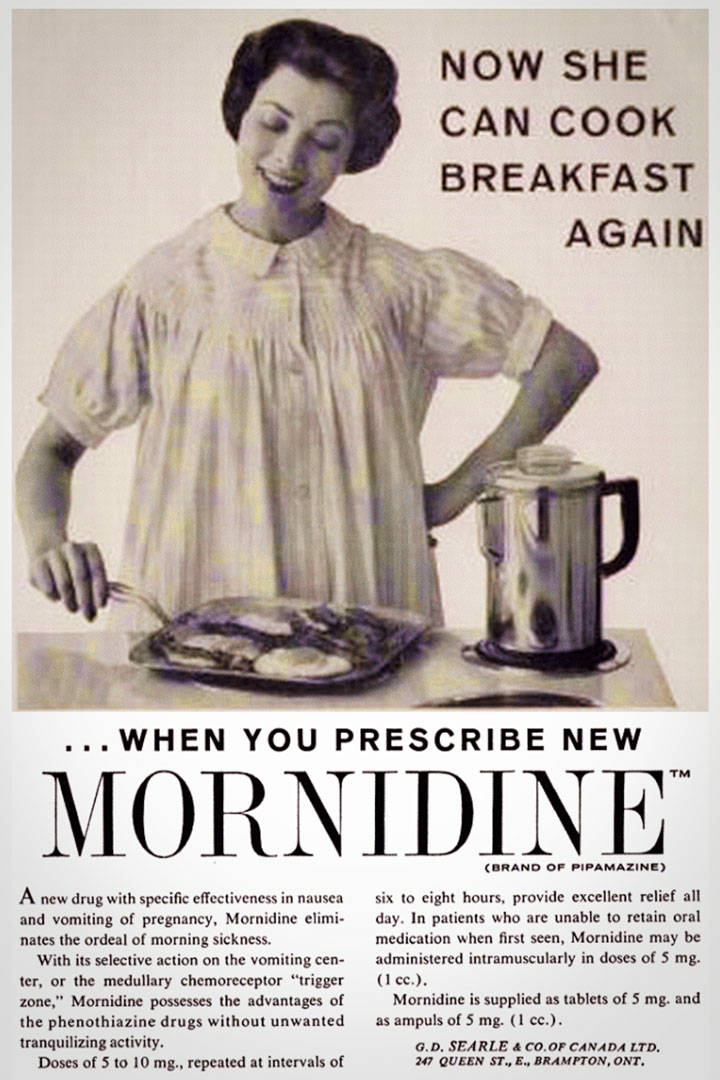Can Folic Acid Prevent Cleft Palates in Puppies?

It takes a combination of genetics, nutrition, biosafety, and good luck to produce a healthy litter of puppies with no birth defects
Cleft palates. Will supplementing your brood bitches with folic acid help prevent them? Well, it depends…
The Backstory
Before we go any further with the prenatal nutrition thing, we need to look at the different reasons why things can go wrong with puppies, so we can understand the limits of prenatal nutrition when it comes to preventing birth defects.
Anything that can go wrong (or right) with a puppy is either:
- Genetic
- Environmental
- Or a combination of both
Let's look at each of these separately.
Genetic Conditions
An example of a straightforward genetic condition would be PRA (Progressive Retinal Atrophy.) If the puppy inherits the “bad” gene from both parents, it will be affected by PRA. If it only inherits one bad gene and one good gene, or if it inherits two “good” genes, it will not be affected by PRA – i.e. it will not go blind.
Of course, if that puppy carries one “bad” gene, he could potentially produce animals affected by PRA although the puppy itself is not affected by the disease. But that’s a different conversation. Just wrap your head around that this appears to be a purely genetic disorder that comes down to the roulette wheel of how the puppy inherits that one gene.
Factors such as environment and other genes appear to have little to no effect on outcomes when the inheritance is purely in this fashion.
Defects Caused by Environment
A dramatic example of defects caused by environmental factors would be thalidomide babies. Mothers who took thalidomide during pregnancy gave birth to children with birth defects - the exact nature of the defect would depend on what day the mother took the medication and what part of the embryo was forming.
On day 20, it would cause central brain damage.
On day 21 it would cause eye damage.
On day 22, damage to the ears and face.
On day 24 damage to the arms.
Damage to the legs would happen if taken up to day 28, and no damage at all if taken after day 42.
So there’s a very obvious and predictable outcome based on the timing of exposure to an environmental hazard.

Thalidomide was touted as a “wonder drug” for morning sickness with disastrous results. Because of the widespread use of the drug, we got a very explicit (and unwelcome) real-life illustration of how the same exact teratogen will have a different effect, depending on the time of exposure.
If Only it Were That Easy
But of course, it’s usually much more complicated than either of those two examples.
Genetic defects often involve multiple genes that interact in ways that are not predictable by any kind of genetic testing.
Furthermore, genetics and environment are often intertwined. So, a particular gene can make a mother predisposed to produce a certain defect under certain environmental conditions. For instance, they have isolated a gene that makes mothers who smoke more likely to produce children with birth defects than mothers who smoke but do not have that gene.
That means that, whenever we are talking about best practices to avoid birth defects, the conversation will include everything from genetics to nutrition to environment.
What We Know About Cleft Palate and Other Midline Closure Defects in Dogs
There are numerous causes of midline defects (which include cleft palates) in dogs.
- Genetic mutations
- Nutritional deficiencies
- Amniotic abnormalities
- Uterine abnormalities
- Maternal metabolic disease
- Viruses
- Chemical substances swallowed by or administered to the mother
- Maternal exposure to chemical or physical environmental pollutants
We really don't have many answers in the big picture about cleft palates in dogs, but there have been a few studies with interesting results.
A genetic mutation that causes midline closure issues have been identified in Nova Scotia Duck Tolling Retrievers but, importantly, this appears to be a breed-specific mutation and does not represent (at this time) a global genetic answer to inheritance of a gene that produces cleft palates.
Folic acid supplementation has been found to greatly reduce the incidence of cleft palates in brachycephalic and other pre-disposed breeds, but other studies have not shown any benefit in some other breeds. This seems to indicate that some breeds might not metabolize folate as well as others, so some breeds might benefit more from folic acid supplementation than others.
And, of course, even if there were a gene that we could test for and it was inherited in a simple recessive fashion, that would not prevent all cleft palates. Dogs would still produce cleft palate under certain environmental conditions - the wrong medication given at the wrong time, exposure to chemicals, etc.

Cleft palates, open skull, open abdomens, and spina bifida are all midline closure issues that occur in the first trimester of life when the neural tube is forming.
Is Folic Acid the Answer?
So back to the nutritional folate and folic acid. Does it guarantee that your bitch won’t produce cleft palates or other midline defects?
Folate/folic acid supplementation will help:
- If the dam’s diet is deficient in folate.
- If the dam has a (presumed) genetic inability to metabolize folate properly or an increased need for folate compared to the average dog or a sensitivity to lower folate levels.
Folate/folic acid supplementation will NOT help:
- If your breed is one that has an autosomal recessive gene that results in cleft palates if the puppy inherits two copies of it.
- If the reason your dam produced clefts or other midline defects is that she walked on a freshly chemical sprayed lawn early in her pregnancy when the neural tube was closing.
So, the answer to the question of whether folic acid supplementation and/or increasing natural folate sources in your dam’s diet will prevent cleft palates and other midline defects is a resounding “maybe.”
Based on our current state of scientific knowledge about the causes and prevention of cleft palates, we rarely can predict which dogs will produce clefts, or why they produce them when they do. But ensuring a safe and adequate level of folate through diet will at least cross off one possible cause in a sea of many, and you should not eschew the practice simply because it’s not a 100% protection against cleft puppies.
If you have a brachycephalic breed or another breed that has been studied and massive doses of folic acid have been shown to be beneficial, then I would advise you to give that supplementation.
If you don’t have one of those breeds, I heartily advise you to bump up folate intake in your brood bitches. You can read our article on folate shakes, here.
Best Practices
Some puppies will still be born with cleft palates, even when the breeder ensures a good level of folate in the dam’s diet and/or supplements with folic acid. This leads many breeders to believe that folate and folic acid are not important in the prevention of clefts. That is untrue.
Even if folic acid/folate supplementation will not prevent ALL cleft palates, we know that it can prevent SOME cleft palates. So why not cover that base?
Ensuring a safe and adequate level of folate through diet will at least cross off one possible cause in a sea of many, and you should not eschew the practice simply because it’s not a 100% protection against cleft puppies.

Folate shakes are a nutritious and palatable way to bump up your brood bitch’s folate intake. With lots of great co-factors and other nutritional qualities there is zero reason not to include folate shakes in the diet of your brood bitches.
Action Items
Start with food sources. Food sources, like leafy greens, beef liver and egg yolks, will contain co-factors that greatly leverage the beneficial nutrients in the food. Food sources will always be safer and more effective under normal circumstances.
You should never be giving excessive amounts of anything to your dams, and liver in particular should be used sparingly because the high amounts of vitamin A can be harmful in the early part of your dam’s pregnancy. But a tidbit of liver, and egg yolk, and a folate shake each day will pack a folate punch without doing any harm.
Supplement with Folic Acid only if the Science Indicates. Folic acid is not exactly the same as folate. It is an artificial form of folate and can be harmful in large doses. Ironically, excessive folic acid supplementation has been found to mimic folate deficiency in humans. So folic acid is nothing to be trifled with.
HOWEVER, if you have a brachycephalic breed or another breed that has been studied and massive doses of folic acid have been shown to be beneficial, then I would advise you to give that supplementation.
Shake it Up. Whip up a smoothie in the blender with baby kale, baby spinach, coconut water, and a tablespoon of flax seed meal. I pour it into freezer bags and freeze it flat so I can break off easy-to-chew pieces for my girls. You can read our article on folate shakes, here.
Protect your Dam. Regardless of any other factor, keep in mind that during the first trimester of pregnancy your litter is extremely susceptible to environmental factors. Until that neural tube closes, the smallest insult can cause birth defects. So jealously guard your dams from any chemicals or impurities or exposure to dogs that might be carrying a virus during that first trimester. Even though that first trimester is when your dams appear the least vulnerable, that is the time when they are most sensitive, and your litter is at the highest level of jeopardy for birth defects.
Bottom Line
As we are always teaching in our course for breeders, breeding dogs is about best outcomes, not perfect outcomes. Just because folate and/or folic acid supplementation does not prevent every birth defect does not mean it’s without value.
The cleft palate story is a microcosm of the entire nutritional debate. Virtually every defect has a list of considerations similar to the cleft palate issue. No matter what you feed, no matter what you do, you can’t control everything, and things can still go wrong. But that should not discourage you. Do what you can, and don’t despair because you can’t control everything!

For further reading and citations to the studies and findings mentioned in this article:
Neil Vargesson (2015): Thalidomide‐induced teratogenesis: History and mechanisms
Available at: www.pubmed.ncbi.nlm.nih.gov
Animal Eye Care: PRA – Progressive Retinal Atrophy
Available at: www.animaleyecare.com.au
AnimaLabs (2014): Cleft Palate Nova Scotia Duck Tolling Retriever Type
Available at: www.animalabs.com
A Domosławska, A Jurczak, T Janowski (2013): Oral folic acid supplementation decreases palate and/or lip cleft occurrence in Pug and Chihuahua puppies and elevates folic acid blood levels in pregnant bitches
Available at: www.pubmed.ncbi.nlm.nih.gov
K L Gonzales, T R Famula, L C Feng, H M N Power, J M Bullis (2021): Folic acid supplementation does not decrease stillbirths and congenital malformations in a guide dog colony
Available at: www.pubmed.ncbi.nlm.nih.gov
Khadijah I. Alnabbat, Ali M. Fardous, Diane C. Cabelof and Ahmad R. Heydari (2022): Excessive Folic Acid Mimics Folate Deficiency in Human Lymphocytes
Available at: www.mdpi.com

About the Author
Jane Messineo Lindquist (Killion) is the director of "Puppy Culture the Powerful First Twelve Weeks That Can Shape Your Puppies' Future" as well as the author of "When Pigs Fly: Training Success With Impossible Dogs" and founder of Madcap University.
Jane has had Bull Terriers since 1982 and she and her husband, Mark Lindquist, breed Bull Terriers under the Madcap kennel name.
Her interests include dog shows, dog agility, gardening, and any cocktail that involves an infused simple syrup.














